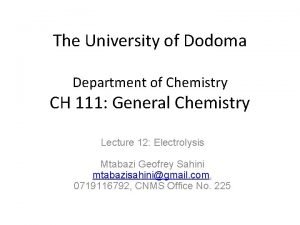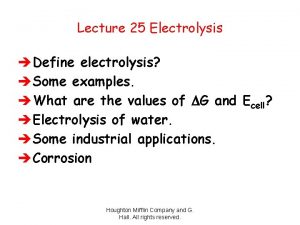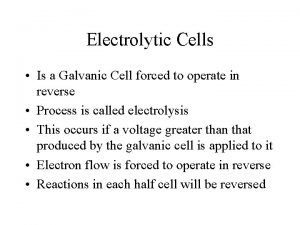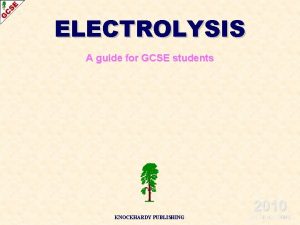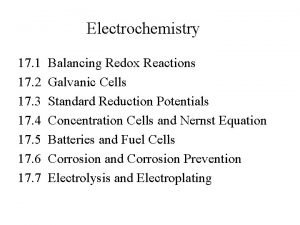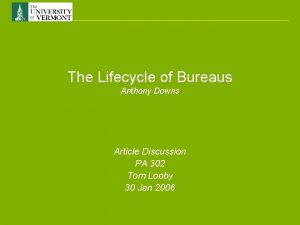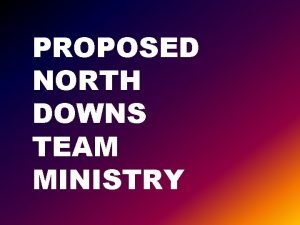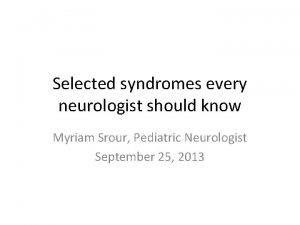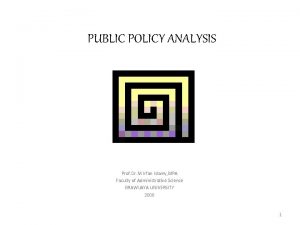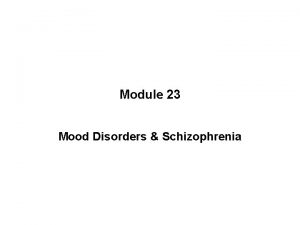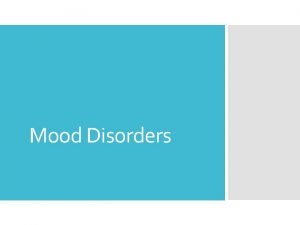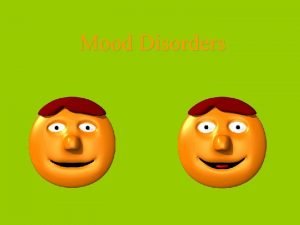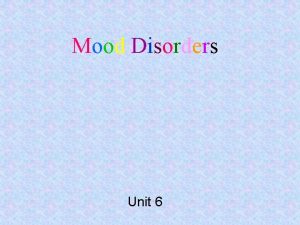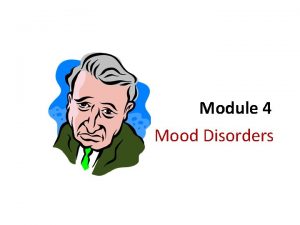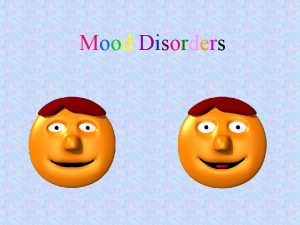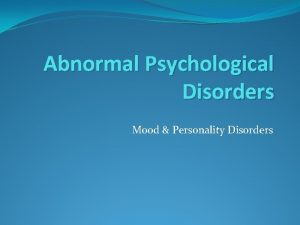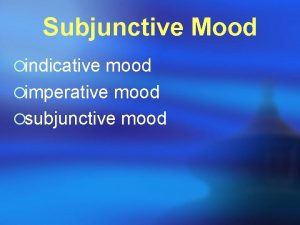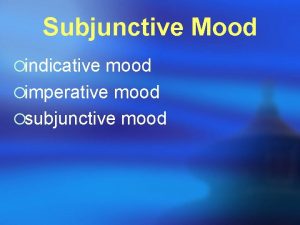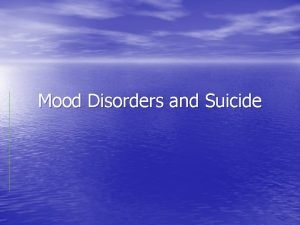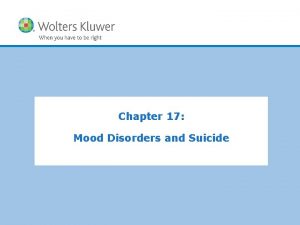Mood Disorders Ups and Downs Mood Disorders Mood













- Slides: 13

Mood Disorders Ups and Downs

Mood Disorders �Mood disorders are characterized by emotional extremes �Can come in two forms �Major depressive disorder with its prolonged hopelessness and lethargy �Bipolar disorder in which a person alternates between depression and mania

Mood Disorders �Major Depressive Disorder �A mood disorder in which a person experiences, in the absence of drugs or a medical condition, two or more weeks of significantly depressed moods, feelings of worthlessness, and diminished interest or pleasure in most activities � Five signs of depression must also occur �This must include lethargy, feelings of worthlessness, or loss of interest in family, friends, and activities

Mood Disorders �Depression has been called the “common cold” of psychological disorders � It is the number-one reason people seek mental help � 13% of U. S. adults will develop a depressive disorder � Depression is a response to past/current loss �Depression works as a car’s warning light. Tells us to stop and take protective measures �However, depression is like a psychic hibernation telling us to slow down �With or without therapy episodes of major depression usually ends

Mood Disorders �However, some people rebound to the opposite emotional extreme- mania �Mania is a mood disorder marked by a hyperactive, wildly optimistic state �Alternating between mania and depression is a signal of bipolar � *Bipolar is a mood disorder in which the person alternates between the hopelessness and lethargy of depression and the overexcited state of mania (formerly called manicdepressive disorder)

Mood Disorders �Between 1994 and 2003 NCHS annual surveys revealed a 40 -fold increase in diagnosis of bipolar for people under 19 � 2/3 of the cases are males �During the manic phase a person is typically over talkative, overactive and elated (but easily irritated) � Shows fewer sexual inhibitions, loud speech and hard to interrupt, and judgment decreases � Does not like advice given to them, however have a strong need for the advice

Mood Disorders �To study the manic Emily Pronin and Daniel Wegner invited students to read a series of statements at either double or half the normal reading speed � Those that raced through the material reported feeling happier, more powerful, more energetic, and more creative �A racing mind arouses an upbeat mood

Mood Disorders �In milder forms mania’s energy does fuel creativity �Walt Whitman, Virginia Woolf, Mark Twain, and Ernest Hemingway all suffered from bipolar �Handel suffered from a mild form of bipolar disorder and composed his nearly four-hourlong Messiah during three weeks of intense, creative energy �But what goes up must come down…

Mood Disorders �Understanding Mood Disorders �Many behavioral and cognitive changes accompany depression �Depression is widespread �Compared with men, women are nearly twice as vulnerable to major depression �Most major depressive episodes self-terminate �Stressful events related to work, marriage, and close relationships often precede depression �With each new generation, depression is striking earlier

Mood Disorders �Biological Perspective � Genetic influences �Risk of MDD and Bipolar increases if your parents have it �If an identical twin is diagnosed with MMD then chances are 1 in 2 that the other twin will be too at some point and time � The depressed brain �Bummed out shows same brain patterns as those of depressed people �Left frontal lobe is inactive during depressed states �Frontal lobes of severely depressed patients are 7 percent smaller than normal �Hippocampus is vulnerable to stress-related damage

Mood Disorders � Two neurotransmitters play a role �Norepinephrine which increases arousal and boosts mood is scarce during depression and overabundant during mania �Serotonin is scarce during depression �Likely to be depressed if a person carries a variation of serotonincontrolling gene �Drugs that relieve depression tend to increase Norepinephrine or serotonin �Prozac, Zoloft, and Paxil deal with �serotonin reuptake

Mood Disorders �Social Cognitive Perspective �Negative thoughts and negative mood interact �People try to deal with depression and explain bad events in terms of stable, global, and internal then that leads to depression �If they deal with it and explain it in better terms (temporary, specific, and external) then typically we see better coping

Break up with a partner Stable “I’ll get over this” Temporary “This is hard to take, but I will get through this. ” Global “Without my partner I can’t seem to do anything right. ” Depression Specific “I miss my partner, but thankfully I have family and other friends. ” Internal “Our breakup was all my fault. ” Successful coping External “It takes two to make a relationship work and it wasn’t meant to be. ”
 Glucose ups and downs
Glucose ups and downs Standby ups block diagram
Standby ups block diagram Dodoma gas and electric
Dodoma gas and electric Downs cell
Downs cell Electroplating khan academy
Electroplating khan academy Downs cell
Downs cell Redox reactions examples
Redox reactions examples The life cycle of bureaus anthony downs summary
The life cycle of bureaus anthony downs summary Proceso downs sodio
Proceso downs sodio North downs benefice
North downs benefice Rick downs
Rick downs Downs view infant school
Downs view infant school Upslanting palpebral fissures protruding tongue
Upslanting palpebral fissures protruding tongue Anthony downs
Anthony downs


